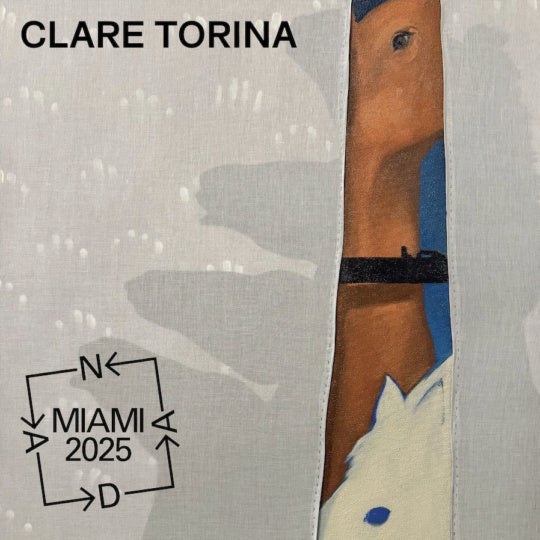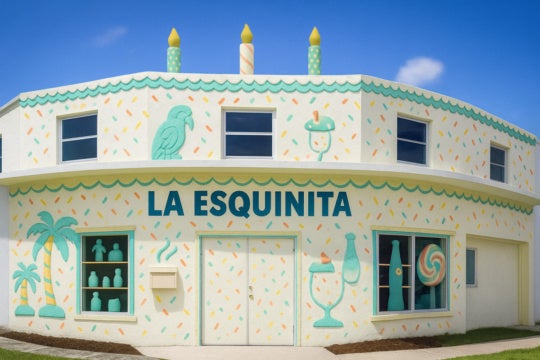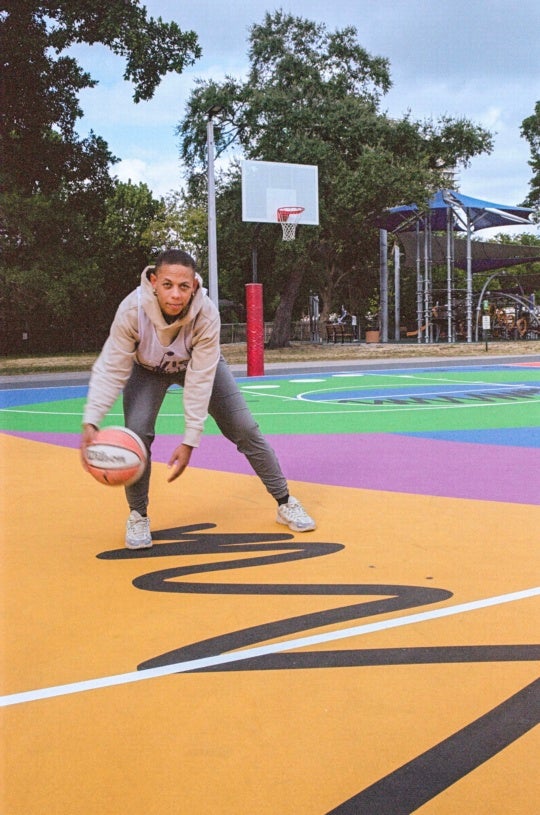
José Parlá’s trademark squiggles beckon through the massive windows that line one side of the SCAD Museum in Savannah. These graffitiesqe markings fill the large canvases and double-sided freestanding works in his exhibition “Roots,” which is part of the museum’s annual deFINE ART Festival.
Parlá’s painstaking process recreates the appearance of street art from derelict neighborhoods and fringe communities in New York and Miami, cities he lives and works in. Up close, the layering, scraping, scratching, scrubbing, and writing on becomes more evident.

For this Cuban American SCAD alumnus, who entered the art school as a 16-year-old on a full scholarship, the challenge was to get his teachers to accept his early street art as art. Photographs that Parlá and his older brother Ray had taken in the mid-’80s of the Miami streets and neighborhoods they grew up in kept the images fresh in his mind while away from home. In school, he worked hard to recreate the gritty surfaces and layers of history embedded in the walls, and to bring them into the present. The Assimilation of Radicle Roots in Survival Mode (2016) is a deteriorated canvas filled with cryptic indecipherable messages that reveal the evolution of hip hop lingo and culture.

I visited the 43-year-old artist in his Brooklyn studio, where he described the genesis of his work as a “psychology of places.” Rugged wooden facades in works like 106th Street and Park Avenue, Spanish Harlem NY 2003 (2014) and West Liberty Street and Whitaker Street, Savannah Georgia, 1991 (2014) capture the rawness and energy of his street art background. Remnants of ripped posters, partial words, signatures, faded colors from previous iterations, and fresh paint recreate the underground culture of his childhood, when graffiti tagging had become popular, but was still a dangerous practice for which Parlá and his peers were chased and beaten by the police. Yet it was this very culture of break dancing, DJing, mixing music tracks, and the fierce lyrics of hip hop that brought kids from Cuban, Puerto Rican, African-American, and South American communities together. Socioeconomic and cultural differences didn’t matter to those pursuing innovative methods of expression.

Works like Wakefield, Whiteplains Road (2014) and Asmali Mescit MH, Pera Istanbul Turkey (2014) commingle graffiti styles and eras from around the world. In this context, Parla describes how 30 years of “excavation of the past”—be it inscriptions from the collapsed Berlin Wall or visual remnants of protests against Fidel Castro’s regime from which his parents fled and spoke about throughout his childhood—have informed the conception and making of his art. The paintings, which he says magnify small areas of urban walls , serve as anthropological studies of the impoverished conditions that breed street art forms that convey cryptic messages, proclamations, and signage that characterize what Parla refers to as a “youth phenomenon.” This methodology comes alive in his three-dimensional sculptural works.
Parlá’s astonishing combination of colors is refreshing. In Nuevo Rambo (2016), aquamarine, white, teal, navy blue, algae green, sapphire blue and other subtle shades of blues and greens are layered, wiped, and worn away with water. Yet the magic of his art lies in the way the rough-hewn surfaces, especially in Nuevo Rombo, was transformed to resemble the gently undulating ocean. Like hip hop artists, Parla brings a creative touch to his tough subject matter, and transforms street art into works of lyricism.





